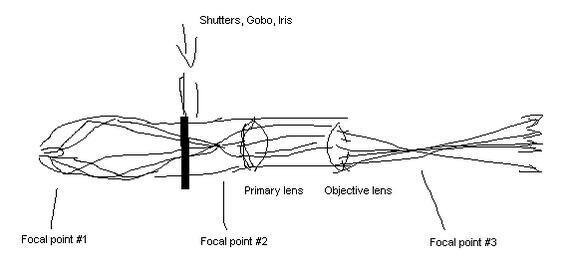Green look to a S-4
PAR fixture? Assuming that it was not the light on the
reflector, we are not talking some thick old
Altman Leko lenses so it’s not really possible that it was persay a bad lot number of
lens that’s green. I would not think bad lenses would not be detectable due to the
thickness. Could be the light you saw it under or it could be a dirty coating on the
lens/
reflector - especially I would think sad dust particles which in being a amber would in some way show up green with white or bluish/white light. Could also be a
fog goo coating (oil also showing up as amber) but I’ll bypass that. Simple dust if not the light and or greenish tint to ambient lighting once bouncing off say foliage.
Not to say that one
lens or
reflector that there could not be some older and less sufficient or some more green than others, just that it’s most likely dirt you saw. Should you visibly be able to see green when the light is not on, this
fixture also when next to a
clear one would put out a light that’s visibly more amber
shift as it were than other more blue/white ones. Minds’ eye for
bench focus or even general focus before
gel - what did the last
fixture’s light look like verses this one.
In noting the “green” ... good detection skills, keep with them observations. Next step after noting things is the scientific method for process of elimination.
On the retaining clip, Lighting
network about a month ago had a discussion about this. If of help in finding it, I added to the topic. Technilux it would seem retails a
lens extractor that’s worth looking into if not making one yourself. My belief is that while in general an interesting thing, some lots of S-4 lenses are more difficult to remove than others. Has to do with the
lens clips and even rotating rings. There has been some bad lots numbers of rotating rings in the past. This not to raise your suspicions as to you having a bad lot number, just that at times it’s difficult to remove lenses at times. You do have
concave side outward also correct? Also by memory of how to do so, you have rotated the clip to the top of the
fixture right?
On the beam spreading out like an oval - it’s simulating the
effect from a normal
PAR 64 can.
Such
PAR can lamps had long linear lamps that were off axis to the
parabolic reflectors in the
bulb thus you had an oval beam of light. That’s standard to most
PAR bulbs that they have an oval beam of light. The S-4
PAR is attempting to emulate this.



